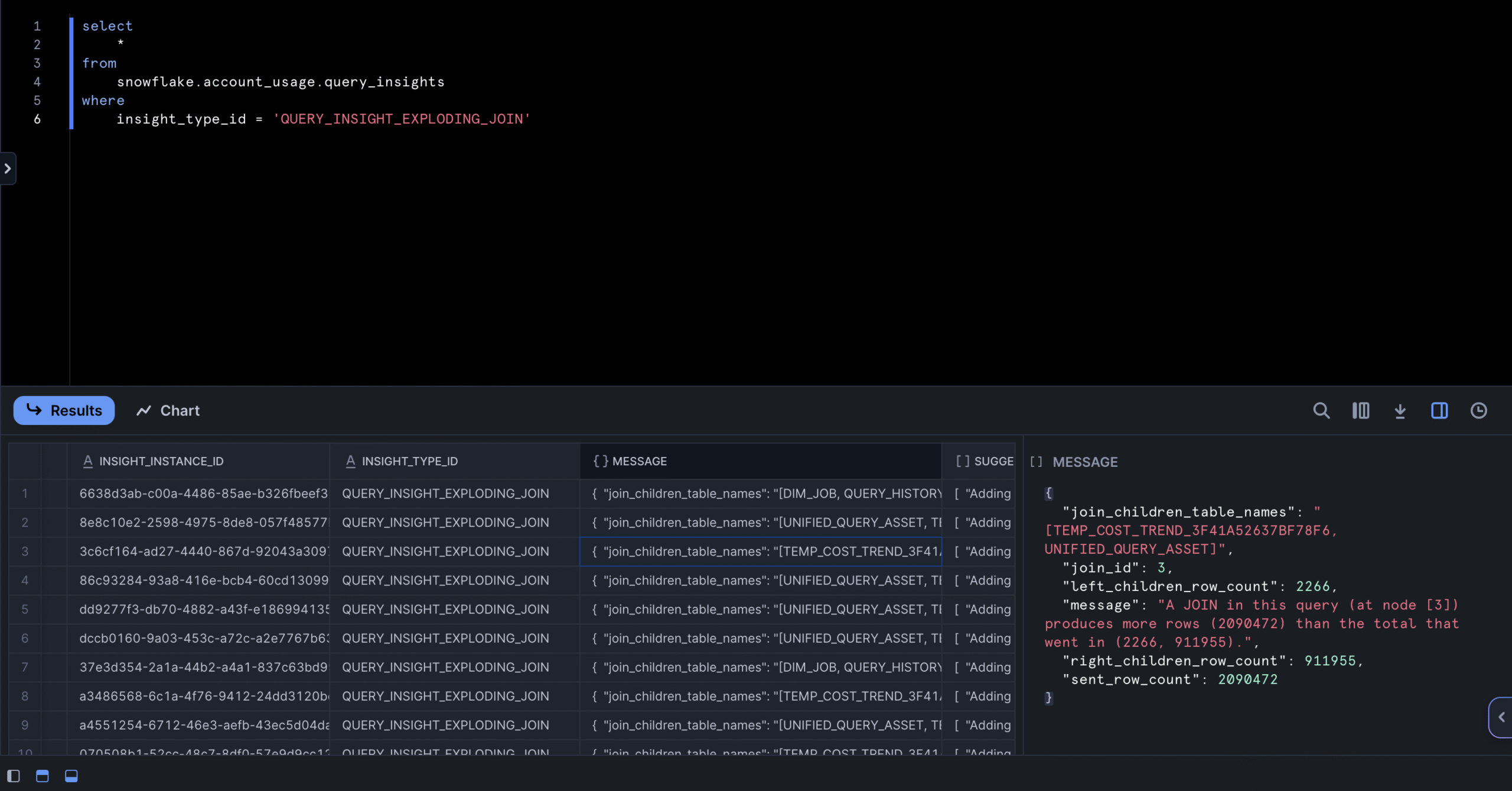Snowflake Launches New Query Insights to Make Performance Bottlenecks Easier to Diagnose
Snowflake recently released a powerful feature, Query Insights View tool, giving data teams deeper visibility into query execution and a faster path to performance root cause analysis. Among the most important additions is native detection of exploding joins, a notoriously subtle but costly issue in large-scale data warehouses.
This feature marks a meaningful evolution in how Snowflake helps users diagnose and optimize problematic queries. For data engineers managing increasingly complex pipelines, it means less time spent guessing and more time solving.
What’s New in Query_Insights?
The new Snowflake Query Insights view surfaces structured diagnostics directly within the Snowflake UI, linked to individual QUERY_IDs. Rather than relying solely on EXPLAIN plans or digging through logs, you now get high-signal insights embedded in the query metadata.
The new diagnostics include:
- Exploding Join (nested and non-nested) – Detects abnormal row growth across join operations
- Join with No Join Condition – Flags Cartesian joins that are often unintentional
- No Filter on Table Scan – Identifies costly full table scans
- Unselective Filter – Surfaces filters that don’t meaningfully reduce row count
- Inapplicable Filter – Highlights filter expressions that can’t be applied efficiently (e.g., on incompatible types)
- Filter with Clustering Key – Identifies when filters are aligned with clustering strategy
- Search Optimization Used – Confirms search optimization has been applied to improve scan performance
- Remote Spillage – Signals memory-intensive steps that spilled to disk
Each insight helps reduce the time to diagnosis for slow or expensive queries, moving engineers closer to root cause with minimal manual effort.
The Cost of Exploding Joins
One of the most critical insights now exposed is the Exploding Join, a condition where a join multiplies rows in a way that isn’t aligned with expectations or intent.
These joins often originate from:
- High-cardinality relationships without appropriate filters
- Missing or weak join conditions
- Multi-table joins that compound fan-out behavior
- Schema changes that shift join behavior subtly but significantly
The result? High memory consumption, long query runtimes, and expensive, often hidden costs.
With row expansion ratios now displayed inline, data teams can pinpoint not just the query, but the specific join step responsible for the blow-up.
for example
select *
from snowflake.account_usage.query_insights as qi
left join snowflake.account_usage.query_history as qh on qh.query_id = qi.query_id
where is_opportunity = TRUE;
How Seemore Builds on Snowflake Query Insights
At Seemore Data, we’re integrating Snowflake’s new insight signals into our optimization engine to provide even richer context and automation. While Snowflake surfaces the “what” and “where,” Seemore extends that to the “why” and “what next.”
We enhance the Query Insights flow by:
- Root Cause Correlation: Tracing exploding joins back to specific cost spikes, SLA breaches, or downstream data quality issues
- Autonomous Optimization: Recommending or automatically applying safer join strategies based on workload history and lineage
- Lineage Context: Mapping join behavior to downstream impacts across dashboards, data products, and pipeline stages
- Real-Time Alerting: Turning exploding joins into actionable signals for engineers before issues escalate
This integration gives teams not just observability, but a system of intelligent, self-optimizing query behavior.
Final Thoughts
Snowflake’s Query Insights is a welcome step toward simplifying the diagnosis of expensive or slow-running queries. By surfacing critical patterns like exploding joins and exposing them in a clear, structured way, Snowflake reduces the cognitive load on engineering teams and speeds up performance remediation.
When paired with Seemore Data’s autonomous RCA, lineage mapping, and query optimization, teams gain the clarity and control needed to operate cloud data infrastructure with precision.
Want to see how much further you can go? Oink a Demo and let Seemore Data turn your diagnostics into action.









